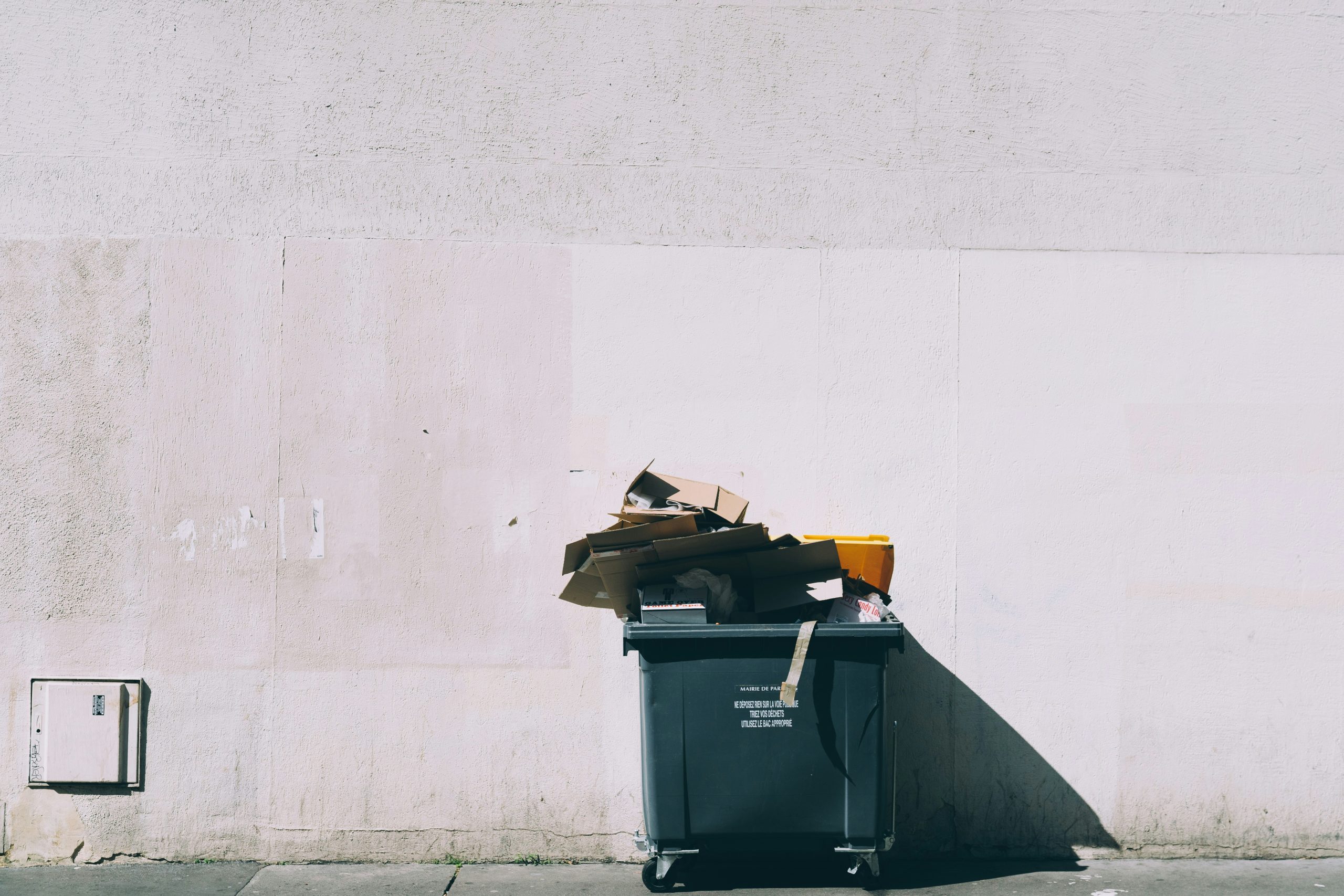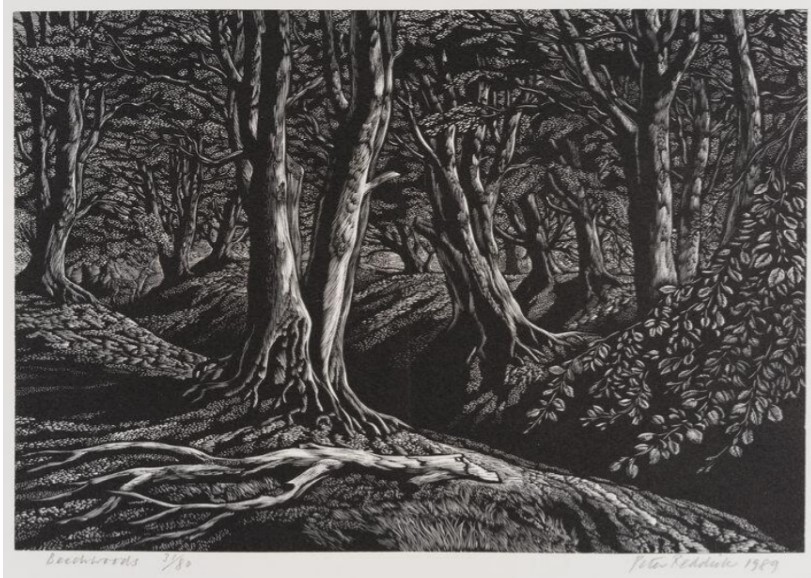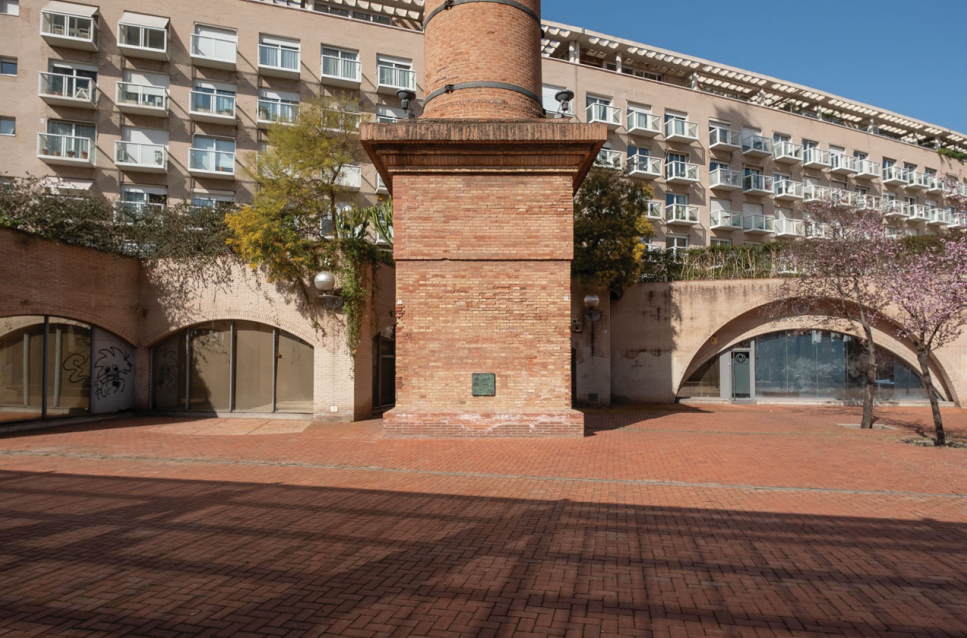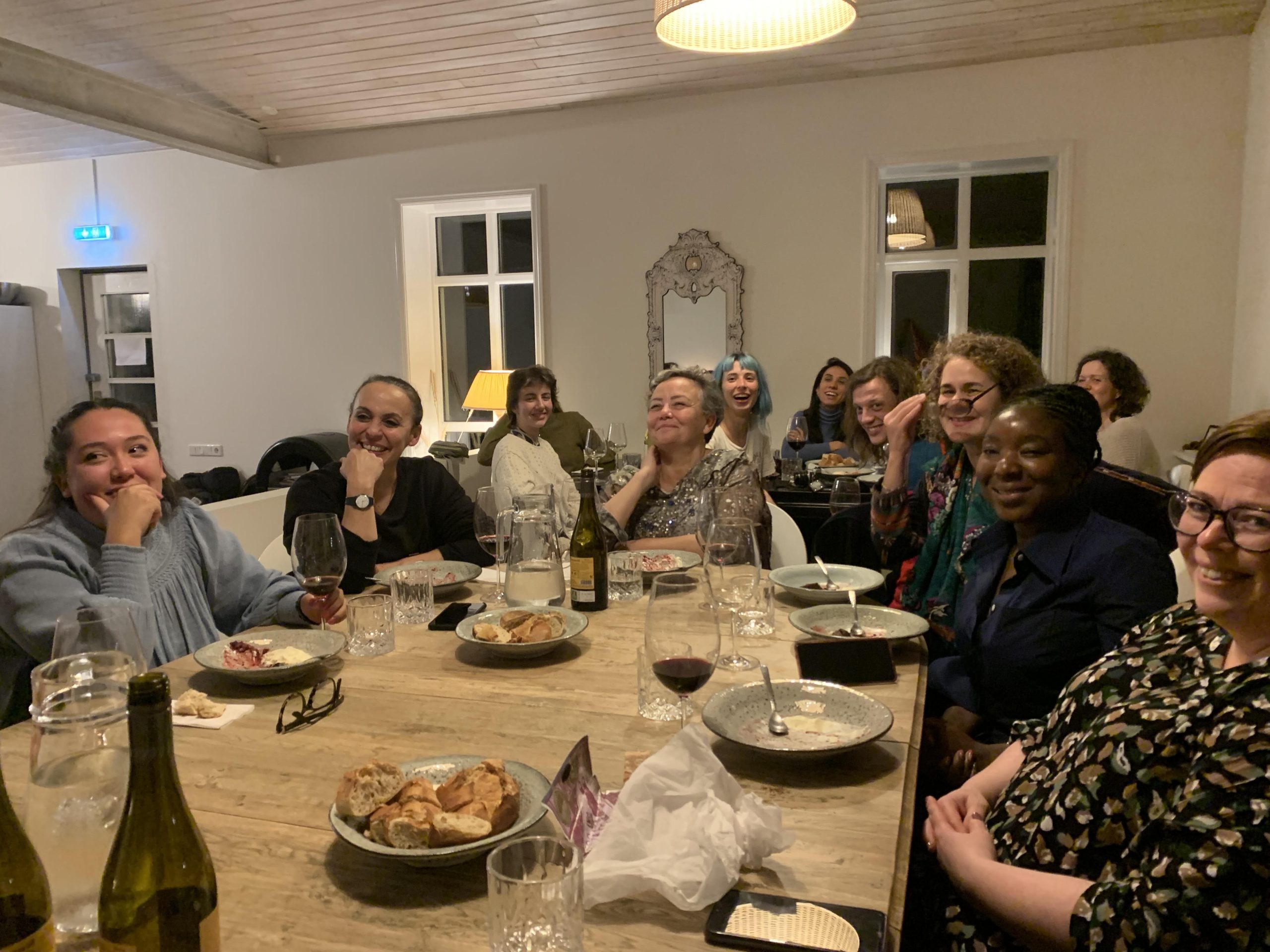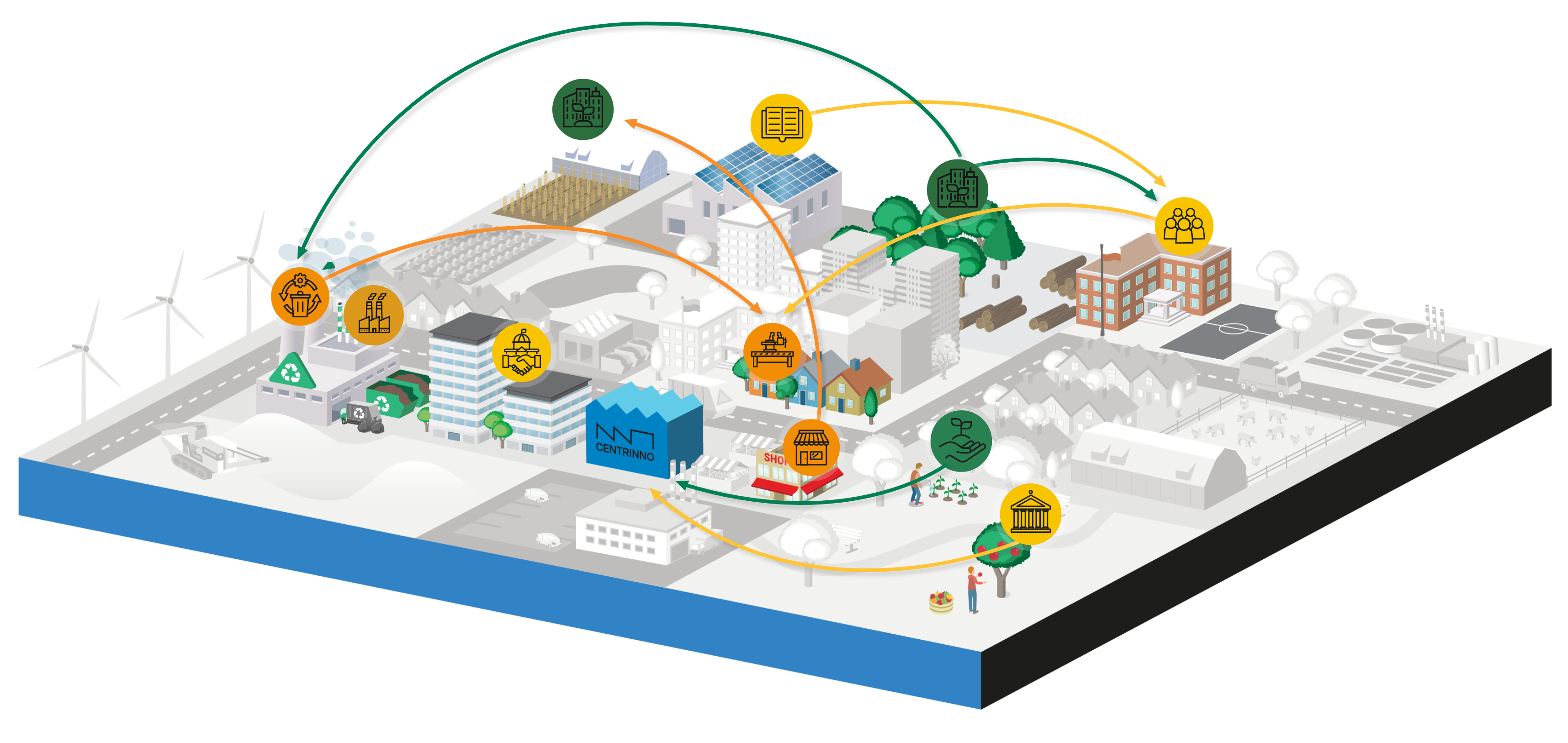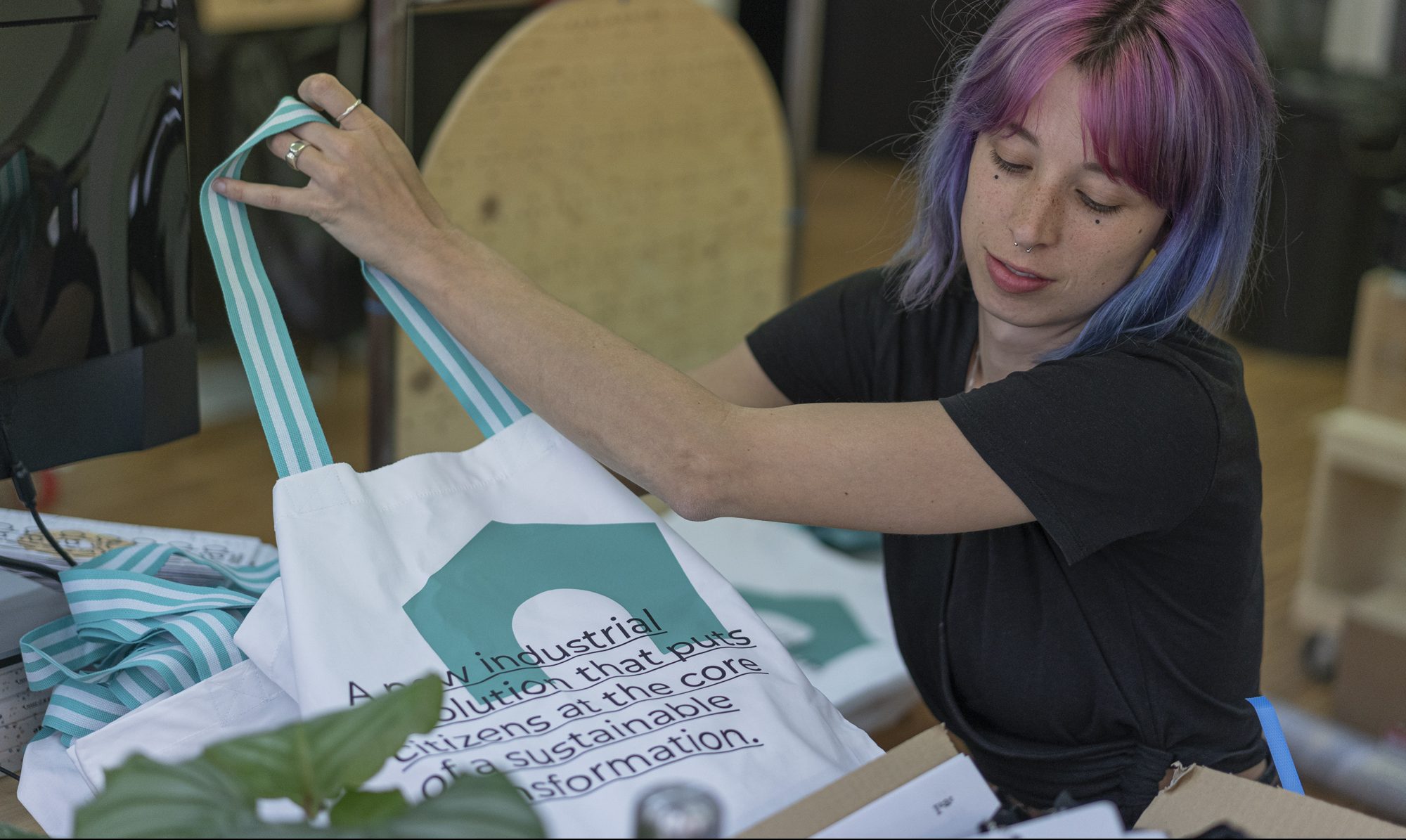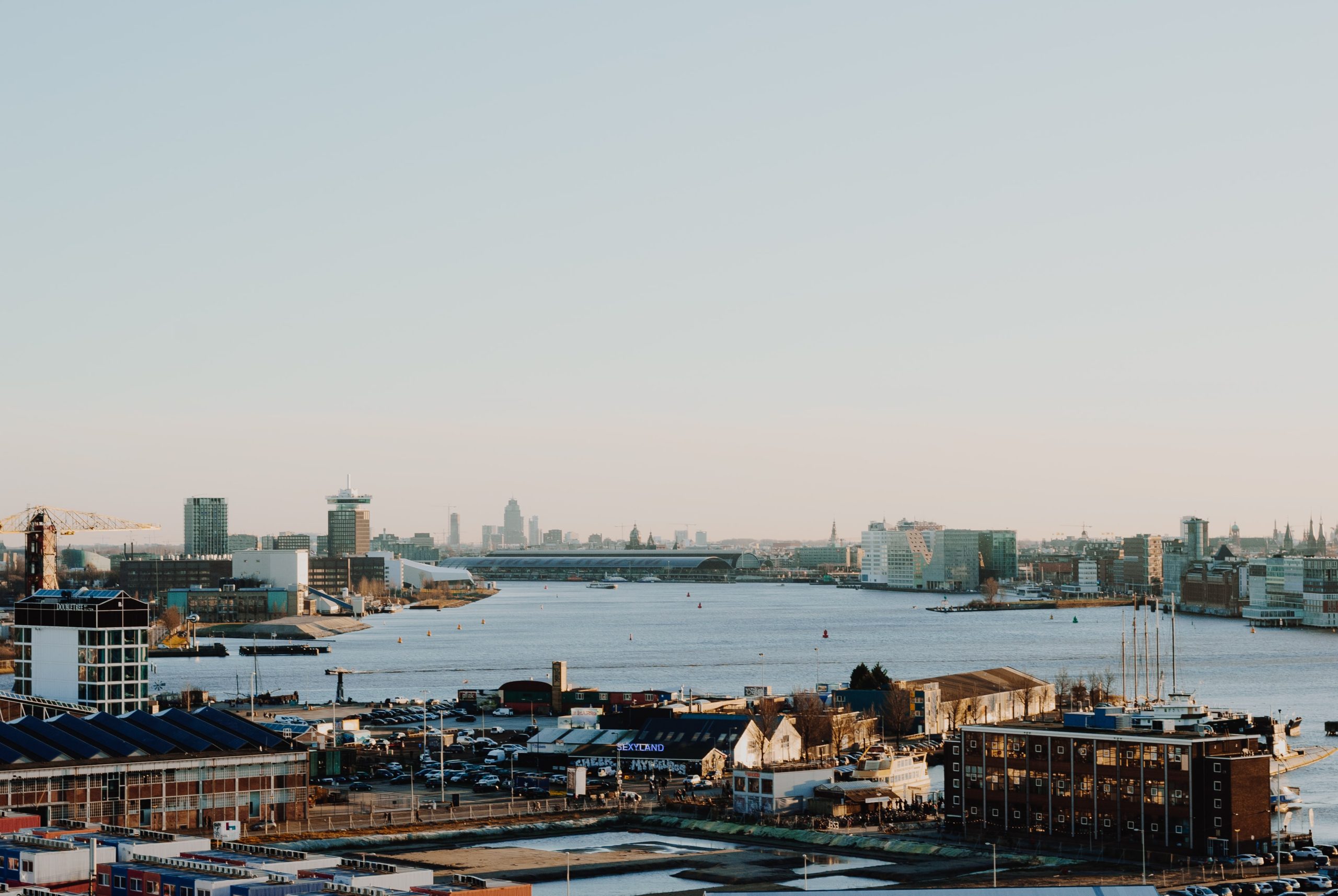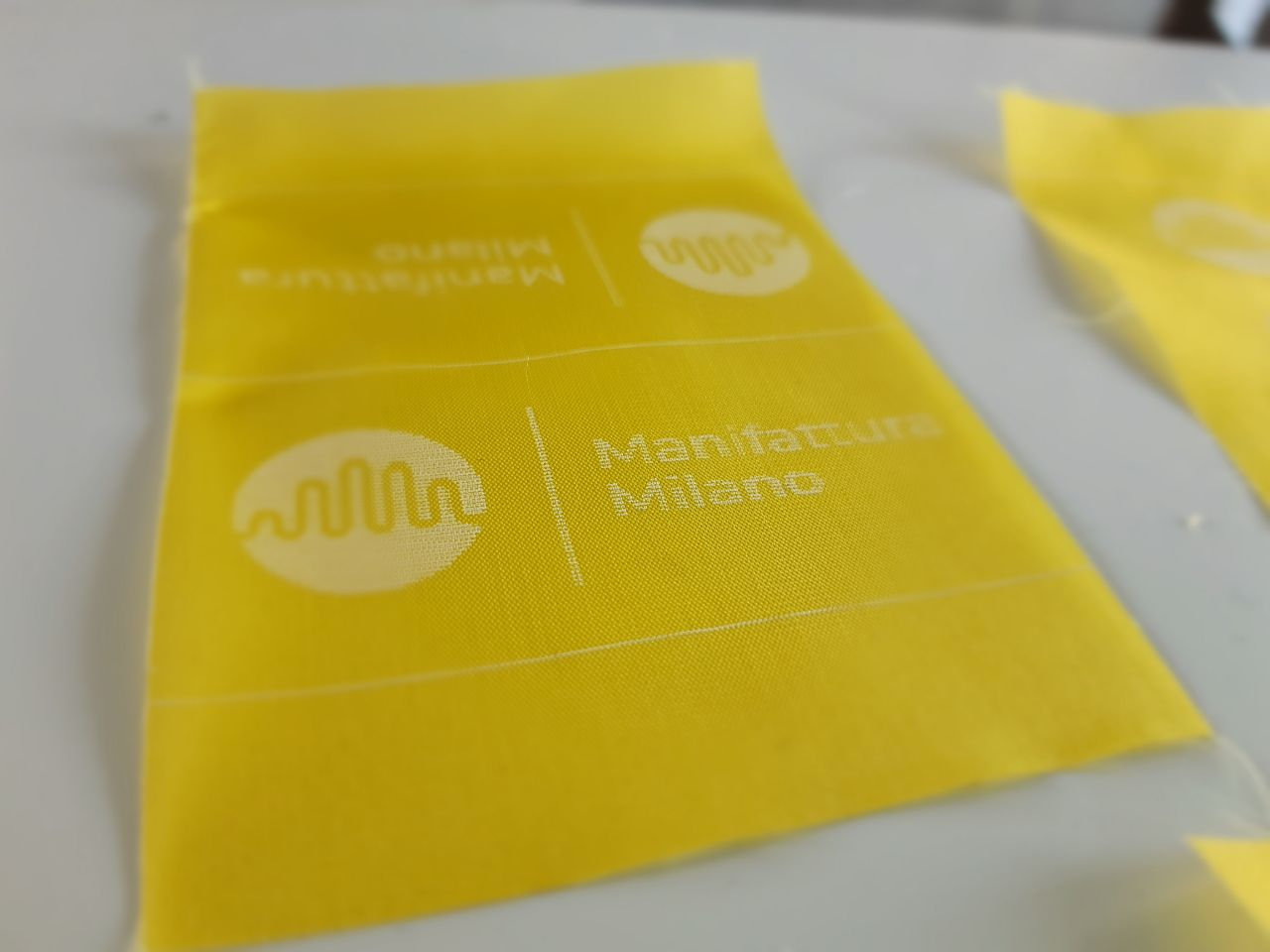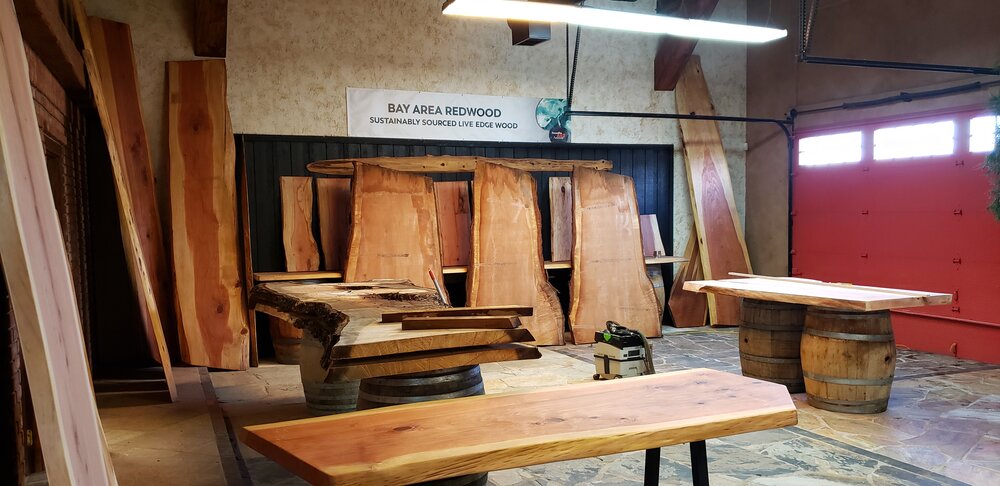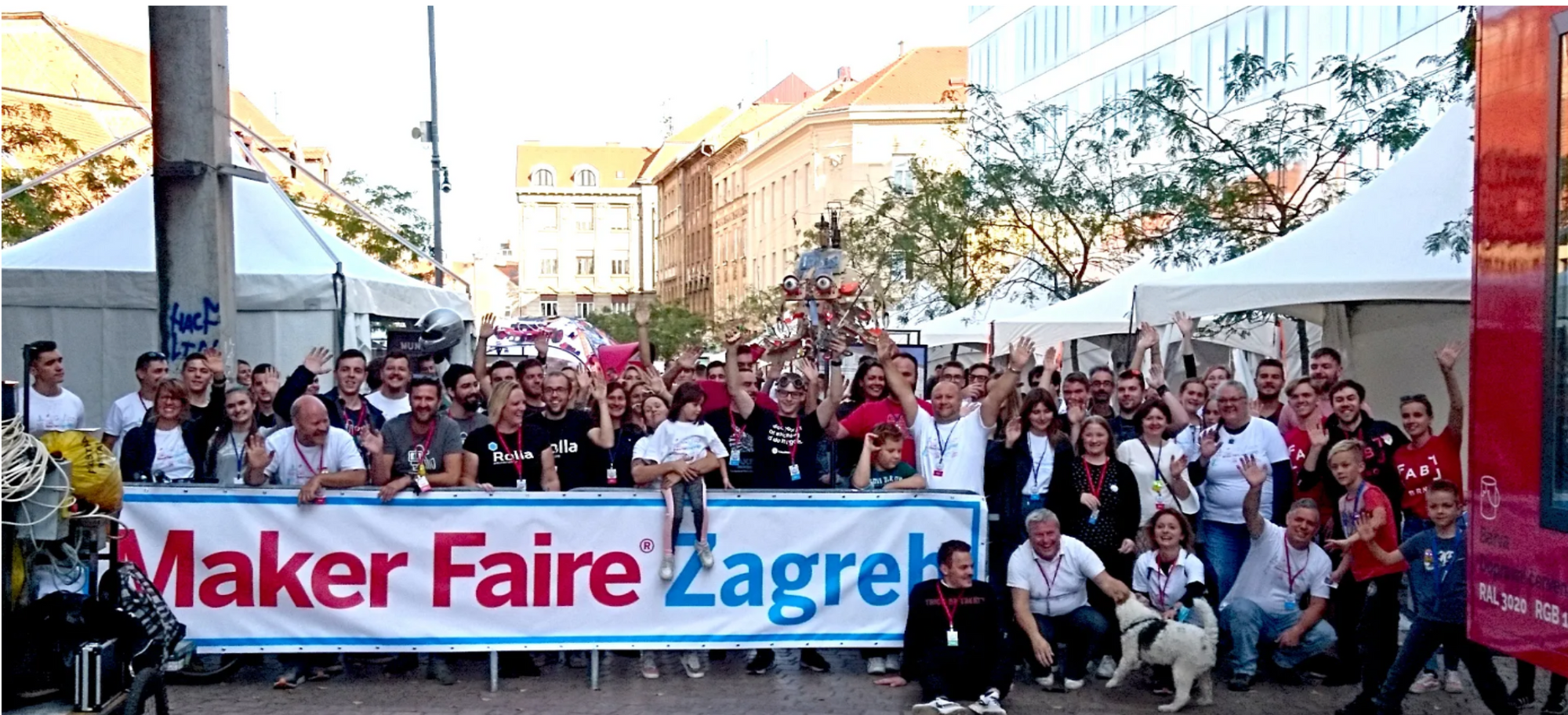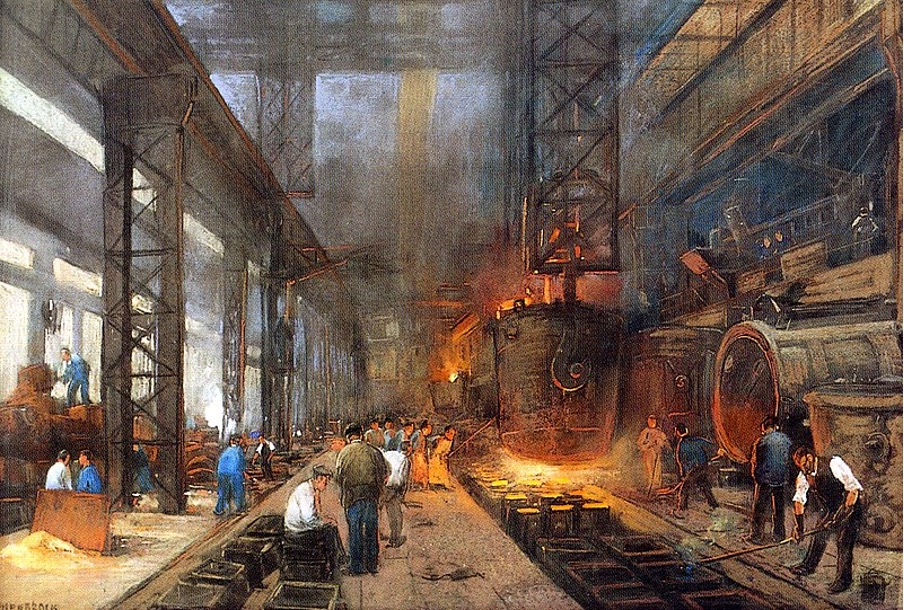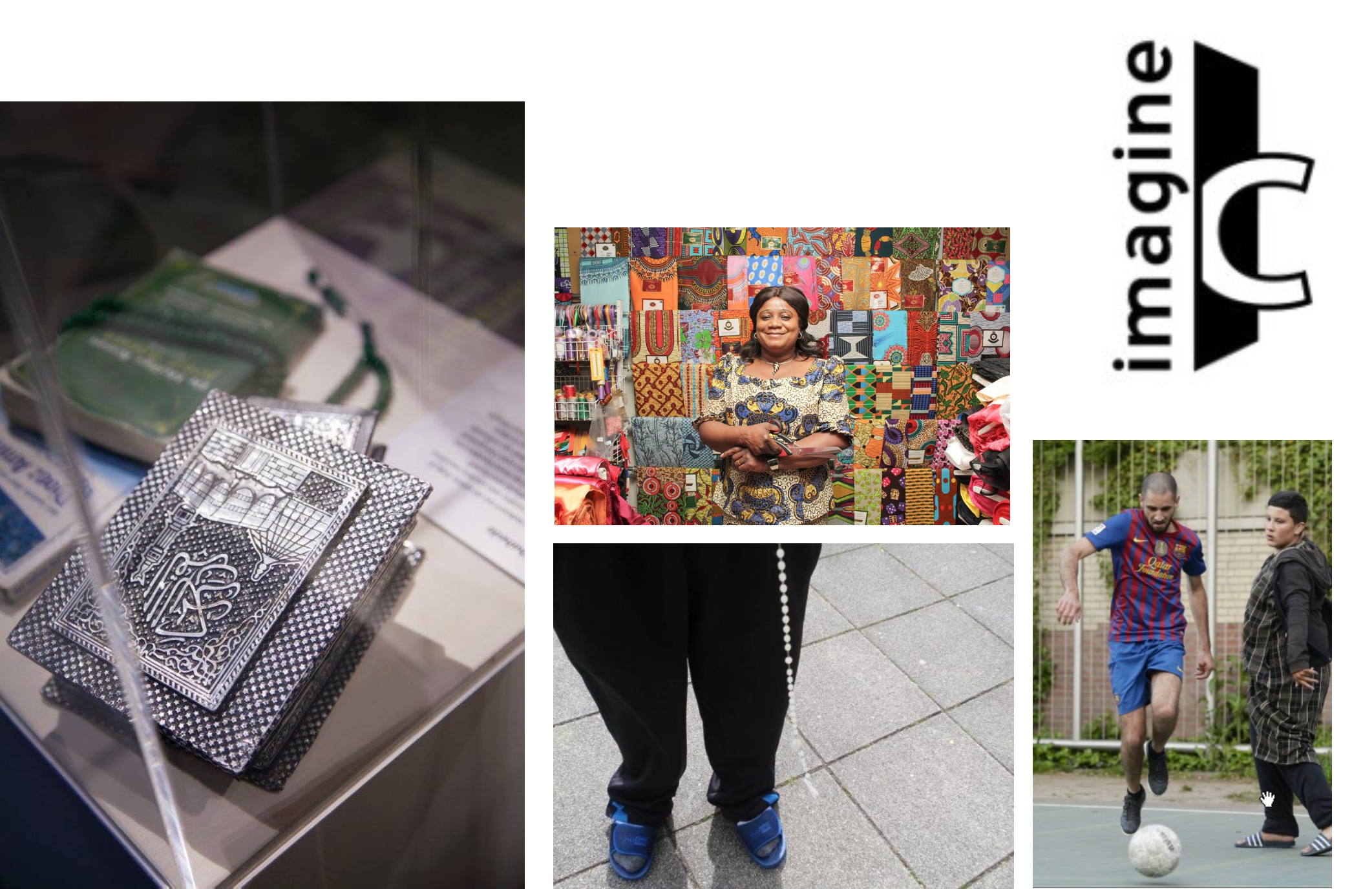BLOG
Wrapping up four years of Centrinno
In order to reflect on the past years of the Centrinno project, we revisited the early days of the project and recalled our initial goals and ambitions. Reading the action plans and even digging through some notes of our first meetings evoke a rather patronizing feeling: If only we knew back then how complex some of the challenges were going to be. A few years later we look back on a project in which we generated impact we could not have always foreseen, in which new ideas arose along the process and we contributed to a network of driven makers taking the future into their own hands.
Early days
‘Furthering circularity for makers in Amsterdam Noord.’ This is how we formulated the overarching goal of our pilot. Amsterdam Noord because of its abundance of industrial heritage and the potential of integrating this heritage into the rapid urban renewal in the area. But how to further circularity? For local production and the fortification of a local network between makerspaces, we need affordable workshops with a long-term perspective of remaining in the area. At this point, it was already known that workshops within the city boundaries were becoming too expensive and rental contracts only temporary. But there was also a need for more education on topics of circularity and a need to work on education in a society where practical work is undervalued. Soon, circularity became a complex web of challenges.
It is for this reason that the Amsterdam pilot consists of its three partners. Waag with its experience in co-creation, research on future just cities and building bottom-up networks. HMC (Wood and Furniture College) contributed to education on circular production and played an essential role in educating a future group of makers. Pakhuis de Zwijger could use its network and studios for facilitating dialogues between all different stakeholders in order to rethink the role we give local production in future cities. The variety of these approaches and expertises was necessary to achieve our goals.
To make a start, we boiled down the complex web of challenges behind circularity to three pillars: Visibility (we needed to put the hardship makers face on the agenda), lobbying (we needed to put political pressure to improve the situation), and education (everything starts with education!).
But how to start? How do you enter a new area and immerse yourself into it? We first mapped the existing workshops and makerspaces in the area and investigated the already existing work being done on this topic to avoid overlapping. Already in this stage it became clear that we needed to work with a decentralised hub: contributing to the strengthening of an ecosystem of makers and their workshops in the area, rather than designating one location, was in line with our lobby to the municipality to provide permanent and affordable workspaces. This remained our approach to the Fab City Hub throughout the project.
As soon as we mapped the existing network, it was time to meet. At first for us to meet the community, but simultaneously to start building up a stronger network between makers. We organised the Open Workshops (Open Werkplaats), and continue to do so until the end of the project, which uses a simple concept: makers open their workshop for one evening to explain the work they do, exchange knowledge, and meet other makers. This along with other network events helped us establish a foundation for an active local community that is willing to take action.
In this part of the process, where we strengthened the community, it was challenging to determine to what degree we could decide which makers could join the community. Some makers did not particularly contribute to the furthering of circularity or could be considered unsustainable. But who were we to determine who could or could not join? We decided to not make very strict distinctions and call for a community of makers with a strong sense of solidarity. This solidarity was needed to shape a strong community that works together.
Getting together a lot
Besides the ongoing open workshops, we continued to work on our three areas of focus through organising many events and gatherings. What connected all these events is the active role that we assigned to citizens (makers, children, communities) to promote having ownership.
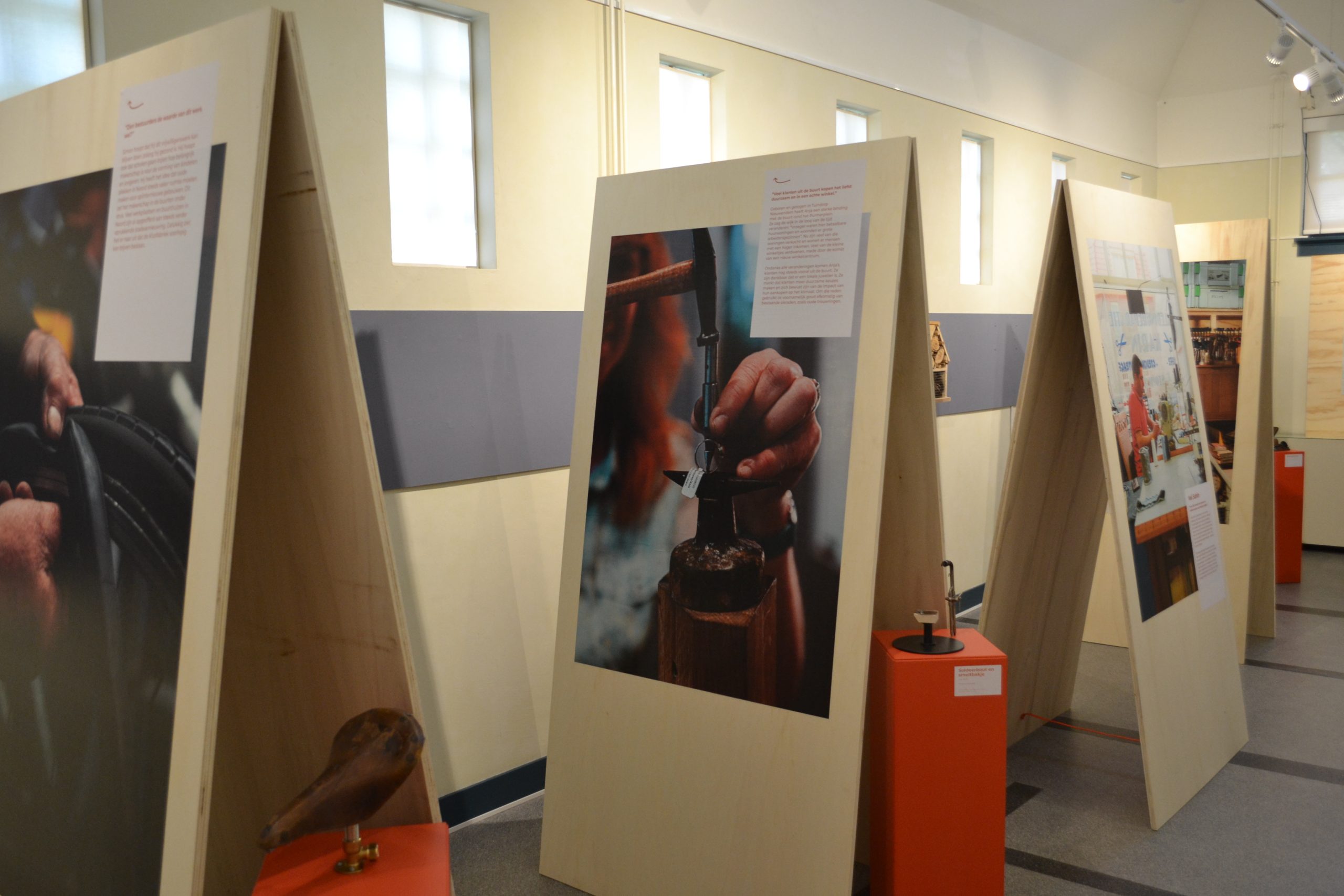
Impression of the exhibition ‘Makers van Noord’
A few examples. For the visibility of both the challenges of makers, as well as the visibility of the important role they play in the current fabric of our cities, we initiated and curated the exhibition Makers van Noord where local makers were photographed and their personal stories were told. This exhibition was installed in multiple locations around the city in order to spread the message as much as possible. Visibility intersected often with the political lobby, as we created a Kumu map indicating the rapid disappearance of makers in Amsterdam Noord in the upcoming years. This map we showed to various politicians and policy makers to visualise the urgency of the situation. We hosted six discussion evening at Pakhuis de Zwijger where makers and other stakeholders had the opportunity to address the future of craftsmanship in the city and where we made the connection to local politics. We made it to Amsterdam’s biggest newspaper with a critical article about disappearing makers. And to educate, we organised DIY firefly workshops where basic making skills were taught to children, we worked together with local schools and gave pupils the task to design their own circular neighbourhood hub and showcase those in a public exhibition opening. And during all this, HMC has continued to organise theme-nights on circularity to offer an easily accessible way to learn about circular craftsmanship.
The impact we made is not to be summarised by these mere achievements but entails a broader process of changes in policy, awareness and mindset. Though it is an ongoing process, we sense that our efforts on visibility and our commitment to the lobby have strengthened the community of makers and their willingness to take action. This did not happen overnight since it required proactive and frequent communication. Even though we put a lot of effort into updating websites, newsletters, blog posts, online event pages: in the end we had to show adaptability and resort to informal communication methods. We found ourselves calling and texting on individual bases, because we also realised: emails sometimes just evaporate in our inboxes.
Having a decentral hub requires extra attention to keeping a community together. To tackle some of the broader societal challenges, the incorporation of other stakeholders into this community was also necessary. While makers, policy makers and politicians share a common goal, their views upon achieving those goals differ radically. It was our task to align these views, to be the symbolic translator in between the different languages spoken, and share amongst the different stakeholders how to adjust to each other. This creation of a common narrative is not a simple task and remains an ongoing process.
Towards a post-Centrinno future
While sprint 1 and 2 were about ‘making acquaintance’ and creating a shareable narrative, we moved towards our last sprint: taking root. This was the point where our pillars came together, where concepts of vocational training, circular economy and social inclusion were integrated into a long term plan for better future prospects for makers. In June 2023 we launched the platform Maakschap Amsterdam with an accessory manifesto, which advocates for affordable rents for makers, more participatory urban development in which makers have a say, and better perspective for practical and circular education. Members of the Maakschap come together for lobbying activities with stakeholders or politicians, events for knowledge exchange and educational activities on circularity. The platform will have a central place to meet, in the NDSM-wharf at the heart of the pilot area, where HMC will open a satellite location.
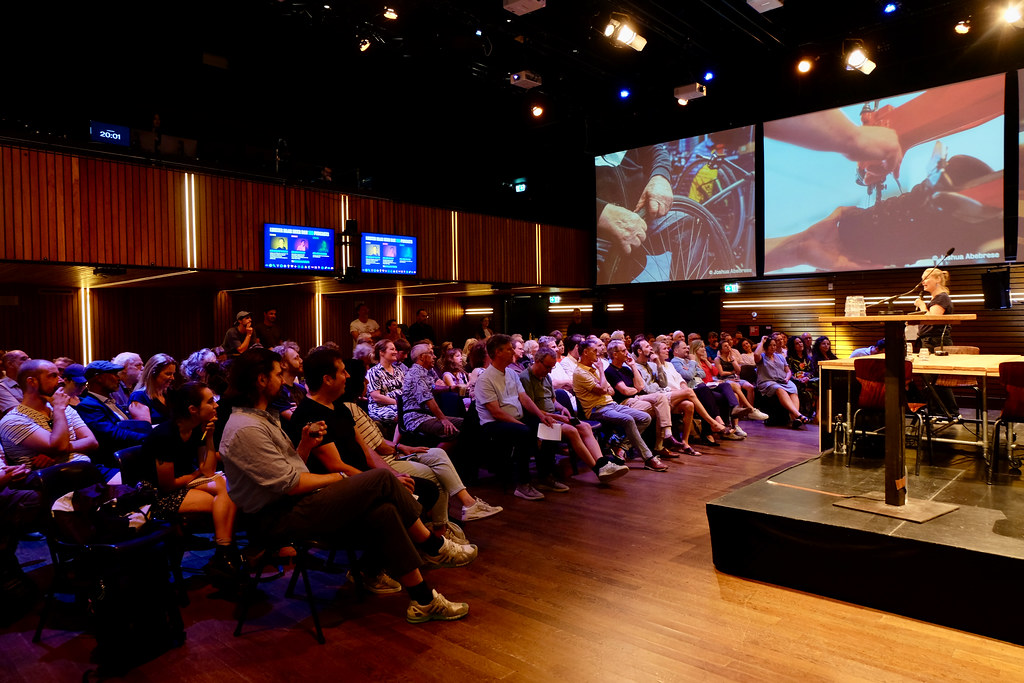
A full room of visitors during the launch of Maakschap Amsterdam at Pakhuis de Zwijger
It took us a lot of effort during the years of Centrinno to build up the current network and with the Maakschap this community can live on! We consider the Maakschap to be a Centrinno legacy that remains part of the future. Our involvement as pilot partners is naturally going to lessen, so our goal is now to take a step back and pass on the planning of activities and learning events to the makers themselves. Like this we believe that with a strongly organised group of makers, the urgency of the challenges of makers will become more apparent and the transition to a more circular society will be more democratic, in line with the needs of makers. But of course, it will take effort for this community to stay united and to keep the work going.
So now we’ve come full circle. While we started the project with identifying the needs of makers in Amsterdam Noord, now it’s time to not just investigate those needs but to respond to them. For the continuation of the project, or if someone were to start over a similar project, we recommend carefully identifying what are the short term and long term objectives and how to incorporate both in your plan of action. A too strong focus on either of those can create an imbalance, since you will lose people on the way if you only seek after that far away point on the horizon, while you forget the overarching goals if you plan too much in the moment. And most importantly, something that cannot be done enough, building on the existing efforts by different stakeholders is essential for achieving your goals. We identified foundations and collectives in the area that were doing similar work to us and made sure we connected. At the same time, our collaboration with them could at any point have been more intensive. Also involving other stakeholders at an early stage helps create a community of practice that works together, avoiding overlap and working efficiently.
We feel hopeful when we see that municipalities, developers and educational institutions around the country are investing more and more in guaranteeing a place for makers in the city through their policy and are understanding the role of makers in the circular transition. But what we really can only dream of, is that it will be understood by everyone in society that we need makers to keep our cities liveable, sustainable and local. That cities without makers just become uncultivated office landscapes. Seeing maker spaces as equally vital to a healthy urban fabric as for example schools or sports facilities, allows for a more adequate response in policy and demands from all citizens to take an active role in safeguarding a place for makers in the city.

The first meeting discussing the future of Maakschap Amsterdam






















